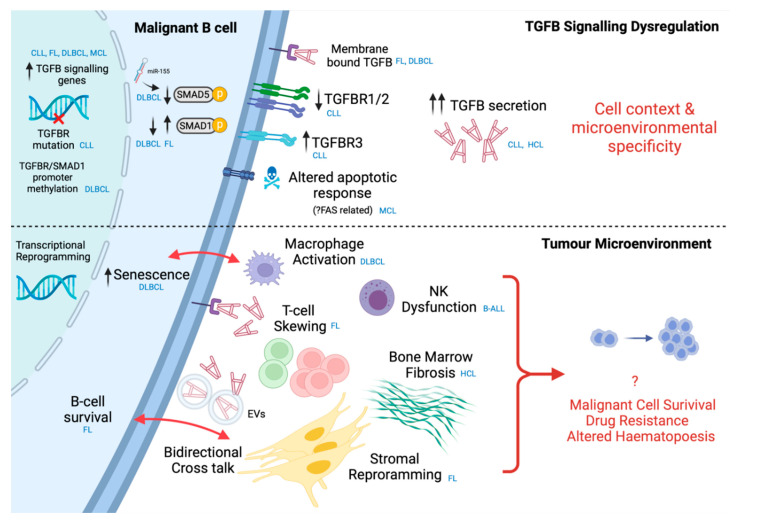Figure 4.
Overview of intrinsic and extrinsic TGFB signalling alterations in B-cell malignancies. Upper panel: Intrinsic signalling alterations in B-cell malignancies ranging from receptor dysfunction, SMAD signalling alterations, and genetic and epigenetic alterations. Distinct alterations are observed depending on the histological subtype defined in blue and are likely dependent on the microenvironmental context. Lower panel: Extrinsic effects of microenvironmental TGFB on B-cell tumour microenvironment. TGFB predominantly promotes a prosurvival niche mediated by immune suppression and stromal reprogramming. Complex bidirectional cross-talk between cells of the microenvironment (stroma and macrophages) drives senescence and survival in malignant B-cells. Alterations observed are dependent on the histological subtype defined in blue. Overall, intrinsic resistance to TGFB and TGFB mediated protumour microenvironmental reprogramming may drive malignant cell survival, drug resistance, and disturbed haematopoiesis. CLL: chronic lymphocytic leukaemia, DLBCL: diffuse large B-cell lymphoma, FL: follicular lymphoma, MCL: mantel cell lymphoma, B-ALL: B-cell acute lymphoblastic lymphoma. Figure generated using Biorender.com (accessed 28 February 2022).

